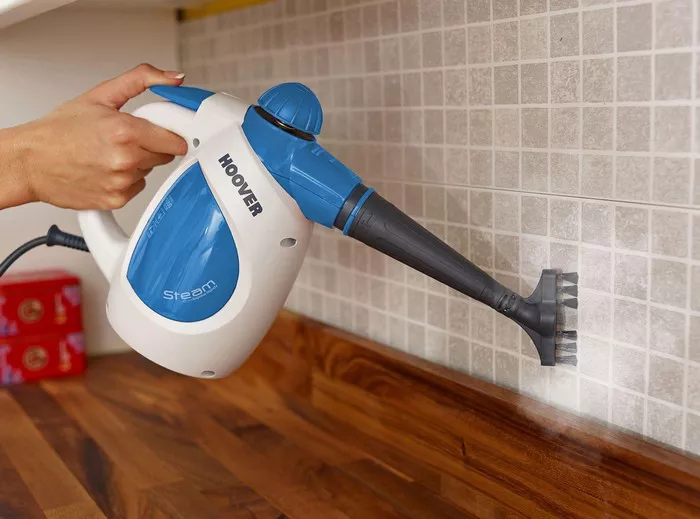Hardwood floors add elegance and warmth to any home, but maintaining them requires careful attention. One cleaning tool that has gained popularity in recent years is the steam mop. However, using a steam mop on hardwood floors raises concerns about potential damage. Steam mops offer a chemical-free way to sanitize floors, but hardwood surfaces are sensitive to moisture and heat. In this article, we will explore whether steam mops are suitable for hardwood floors and how they can be used safely.
How Do Steam Mops Work?
The Basics of Steam Mopping
A steam mop uses water heated to produce steam, which is then directed through the mop head to clean floors. This steam effectively loosens dirt, grime, and bacteria. Since steam evaporates quickly, it leaves surfaces dry, making it a popular choice for those who want to avoid chemical cleaners.
While steam mops are excellent for cleaning tiles and other hard surfaces, hardwood floors require more caution. Hardwood is naturally sensitive to moisture, and introducing steam can create problems if not used properly.
Hardwood Floor Vulnerabilities
Hardwood floors, especially unsealed or poorly sealed ones, can easily absorb moisture. Even a small amount of water seeping through cracks or worn areas can cause the wood to swell, warp, or even crack. Steam mops release water in the form of vapor, which can penetrate these weak spots if the wood is not fully sealed. Furthermore, the high temperatures generated by steam mops may degrade the protective finish over time.
Can Steam Mops Be Used on Hardwood Floors?
Understanding Sealed vs. Unsealed Hardwood Floors
The primary distinction when considering whether to use a steam mop on hardwood floors is whether the floor is sealed. Sealed hardwood floors have a protective layer that can resist moisture to some extent, making them less vulnerable to the effects of steam. However, unsealed hardwood or floors with worn finishes are highly susceptible to water damage.
If your floors are sealed, you might be able to use a steam mop occasionally, but you should still use the lowest steam setting to minimize the risk. On the other hand, steam mops should not be used on unsealed hardwood floors due to the high potential for moisture absorption and damage.
Manufacturer Recommendations
Before using any steam mop on hardwood floors, it is important to consult both the flooring manufacturer and the steam mop manufacturer’s guidelines. Many flooring manufacturers explicitly warn against the use of steam mops on hardwood floors. Ignoring these guidelines could void warranties and lead to costly repairs.
Alternatives to Steam Mops for Hardwood Floors
Dry Dusting and Sweeping
One of the simplest and safest ways to keep hardwood floors clean is regular dry dusting or sweeping. Dirt and dust can accumulate on hardwood, causing scratches if not removed. A microfiber mop or a soft-bristle broom can effectively pick up dust without causing damage to the floor’s surface.
Damp Mopping
For a more thorough clean, a damp mop can be used. This method involves lightly dampening a microfiber mop with water or a specially formulated hardwood floor cleaner. It is essential to ensure the mop is only slightly damp, not wet, to avoid exposing the wood to excess moisture. Damp mopping is often safer for hardwood floors than using a steam mop.
Vacuuming
Vacuuming is another effective way to maintain hardwood floors. Use a vacuum cleaner designed for hardwood or one with a hard-floor setting. Avoid vacuum cleaners with beater bars, as they can scratch the surface of the wood. Regular vacuuming prevents dirt from accumulating and scratching the finish.
see also: Is a Steam Mop Best for Tile Floors?
Tips for Using a Steam Mop on Hardwood Floors
Spot Testing
If you decide to use a steam mop on your hardwood floors, start by testing it in an inconspicuous area. This will allow you to check for any negative effects, such as dulling or clouding of the finish. If any signs of damage occur, discontinue use immediately.
Use Low Settings
Always use the lowest steam setting when cleaning hardwood floors with a steam mop. This minimizes the amount of moisture released and reduces the risk of water seeping into the wood. It is also important to keep the mop moving to avoid concentrating steam in one area for too long.
Check the Mop Pad Frequently
During use, monitor the steam mop’s cleaning pad to ensure it does not become overly saturated with water. If the pad becomes too wet, it could lead to water pooling on the floor, which increases the risk of damage. Replace or wring out the pad as necessary to keep it clean and dry.
Conclusion
While steam mops offer a convenient and effective way to clean and sanitize many types of floors, using them on hardwood requires extra caution. The moisture and heat produced by steam mops can be harmful to hardwood, especially if the floors are unsealed or have worn areas. For those with sealed hardwood floors, steam mops can be used occasionally on a low setting, but traditional cleaning methods such as dry dusting, damp mopping, and vacuuming are often safer options.
Ultimately, it is essential to follow the manufacturer’s recommendations and take steps to protect the longevity of your hardwood floors. By using the right tools and cleaning methods, you can keep your hardwood floors in excellent condition for years to come.
Related topics:

